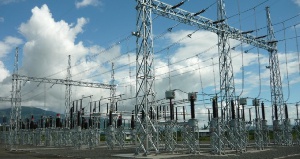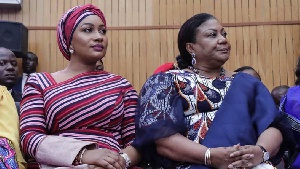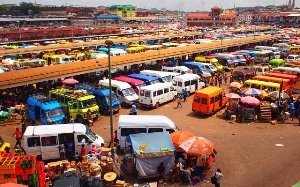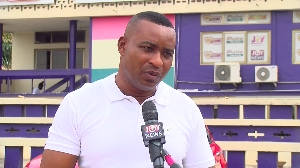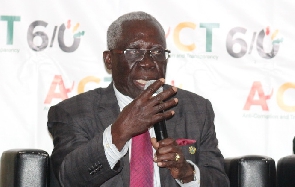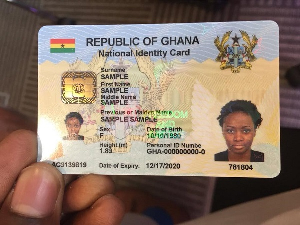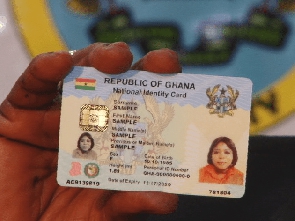In the past years, Ghana has experienced severe electricity supply challenges costing the nation an average of US $2.1 million in loss of production daily. The electricity supply challenges can be attributed to a number of factors, including a high level of losses in the distribution system, which is mainly due to the obsolete nature of distribution equipment, as well as non- payment of revenue by consumers and also overdependence on thermal and hydro sources for electricity generation and a poor tariff structure.
Solving Ghana’s electricity challenges would require measures including but not limited to diversifying the electricity generation mix through the development of other hydro power and renewable energy sources for which the country has huge potential.
INTRODUCTION
Electricity is very important for the survival and existence of human in this 21st century. The building block of every sector of the nation economy is based on electricity, which is very important for quality healthcare delivery, education, transport, effective communication, mineral exploration and many more. Isolated diesel generator plants dispersed electricity across Ghana which dated back in the colonial days of the Gold Coast (Nyarko, 2017). The Akosombo Dam Project over the Volta River provided a total installed capacity of 912 MW for electricity generation was completed in 1972 and in 1982; the Kpong Hydroelectric Power Station was commissioned, increasing the installed generation capacity by 160 MW (Nyarko, 2017).
Information to the write up of this policy brief is informed by two reports: World Bank’s Energizing Economic Growth in Ghana: Making the Power and Petroleum Sector Rise to the Challenge, published in June 2013, and Ghana Constraints Analysis: Partnership for Growth, published in 2011 by a joint United States and Government of Ghana Technical Team. This policy brief has outline briefly the state of energy demand and the supply gap, the supply-side challenges and finally identify some key issues that should be the focus of policy decision- making.
BACKGROUND
Rapid increase in population growth, increased urbanization and rural electrification, increasing technology penetration, and the pressure to transform into a middle-income country has engineered a dramatic increase in demand for electricity in Ghana (African centre for economic transformation (2015).
Electricity supply in Ghana, over the past decade is faced with a lot of supply challenges resulting in considerable impact on the economic situation of the country (Nyarko, 2017). Electricity in Ghana has been ranked as the second most important constraint to business activities in the country and it was established that Ghana lost about 1.8 percent of GDP during the 2007 electricity supply crisis (Mathrani, et al., 2013).
Some countries are successful in renewable electricity supply which has helped in transforming and sustaining electricity supply such as USA, United Kingdom, Iceland, Sweden, Costa Rica, Nicaragua, Uruguay, Denmark, Morocco, Kenya, Canada, Germany, Spain, Australia, China and France. For these countries, the existence of solar energy policies managed to increase solar power generation signi?cantly (K.H Solangi et al, 2011).
In order to promote and ensure the rapid, effective and smooth development of renewable energy, the Malaysian government has formulated a series of policies on renewable energy development, including laws, regulations, economic encouragement, technical research and development, industrialized support and renewable energy model projects, etc. These policies provide signi?cant motivation and interest for the development and use of renewable energy technologies. However, Malaysia’s renewable energy development policy has a few limitations, such as lack of coordination and consistence in policy framework; less encouragement in lower level, lack of regional policies innovation; unhealthy and incomplete ?nancing and investment system; inadequate investment in technical research and development of renewable energies(K.H Solangi et al, 2011).
This policy brief presents the state of the electricity supply in Ghana and discusses the roles of ministry of energy in the in-electricity supply. It also discusses pertinent issues relating to demand and supply of electricity including unfulfilled and future demand for electricity. The policy brief concludes with a discussion of the challenges facing electricity supply in Ghana and the recommendation available in transforming and sustaining electricity supply in Ghana.
GHANA ELECTRICITY DEMAND, SUPPLY AND USAGE
Ghana has experienced an increase of 49.8 percent in peak load over the last 10 years; increasing from 1,393 MW in 2006 to 2,087 MW in 2016 (Energy Commission of Ghana, 2016; VRA, 2015; Energy Commission of Ghana, 2017).
Gross electricity consumption in Ghana took a rather sharp decline from 9,059 GWh in 2006 to 7,413 GWh in 2007 (a reduction of 18.2 percent of the 2006 figure) before rising steadily by an annual average of 10.8 percent till 2014. This trend however declined by 11.3 percent from 2014 to 2015 before increasing by 15.3 percent in 2016 (Energy Commission of Ghana, 2016a; Energy Commission of Ghana, 2017).
Ghana’s electricity supply performance, access and security in global and continental perspective according to Energy Architecture Performance Index (EAPI) is far behind the world top 10 performers in which its average electricity supply score of 0.45 is above the SSA average of 0.28 and it lags considerably behind the global average of 0.84.
ECONOMIC COST OF FAILURE OF ELECTRICITY SUPPLY
Power failures cause significant direct and indirect costs to utilities, consumers, and the general economy. According to World Bank estimates, the direct cost of power outages to African nations is typically about 2% of GDP. “For reference, Ghana's GDP growth averaged about 5% between 2000 and 2010, meaning that power unreliability in those years negated a significant amount of potential economic growth. The World Bank again estimates that Ghana's nominal GDP as of 2008 was approximately $16.1 billion, meaning that power outages potentially cost the economy more than US$320 million per year.
Supply interruption imposes substantial cost on households because of damage to appliances and the spoilage of food and compromises public safety in the delivery of health care services, often with tragic consequences and the greater the technology penetration into economic activities, the greater the economic losses. Direct costs to utilities, among other things, include cost of repairing damaged equipment, process restart costs; generation revenue losses, and reduced equipment's life span.
GHANA’S ELECTRICITY SUPPLY CHALLENGES
Ghana has been heavily dependent on hydro sources, mainly from the Akosombo dam for electricity generation as demonstrated. This has been because hydro sources are known to provide the cheapest source of electricity as compared to thermal and renewable energy sources.
The West African Gas Pipeline, transporting natural gas from Nigeria has been the major supplier of natural gas for electricity generation until the commissioning of the Atuabo gas processing facility owned by the Ghana Gas Company in 2015 (Boadu et al 2015). Gas supply from Nigeria has however not been reliable with the Nigerians citing non-payment of debt as one of the major reasons.
RECOMMENDATIONS
Renewable energy provides viable alternatives to the power crises, seeing that the country is endowed with abundant renewable energy resources particularly solar. The Renewable Energy Act was therefore passed into law in 2011 to provide the legal framework for the adoption of renewable energy sources into the generation mix.
The Energy Commission under the auspices of the Ministry of Energy should fully introduce the National Rooftop Solar PV Programme as a means of providing capital subsidy for the development of rooftop solar PV systems to residential facilities. The programme will seeks to help reduce the burden on the conventional power generation facilities.
CONCLUSION
Sporadic efforts made are not adequate to improve the situation without strong state initiatives in terms of proper planning, programme design, financial support and institutional arrangement. There is a need of proper integration of local resources in hybrid technology combinations to ensure adequate, reliable and affordable supply.
Efforts aimed at addressing some of these challenges include ministry of energy developing the gas resources from the country’s oil fields to provide stability in supply of natural gas to the nation’s thermal generation facilities.
The country has potential in smaller hydro power and renewable energy sources which when fully exploited would bring diversity into the country’s generation mix thereby curbing the heavy dependence on the Akosombo dam and the major thermal generation facilities.
Luqman Abubakari is a Master of Public Policy Student at the WILLY Brandt School of public policy -Germany. He is also the current communication Director of NPP-Leipzig-Germany

